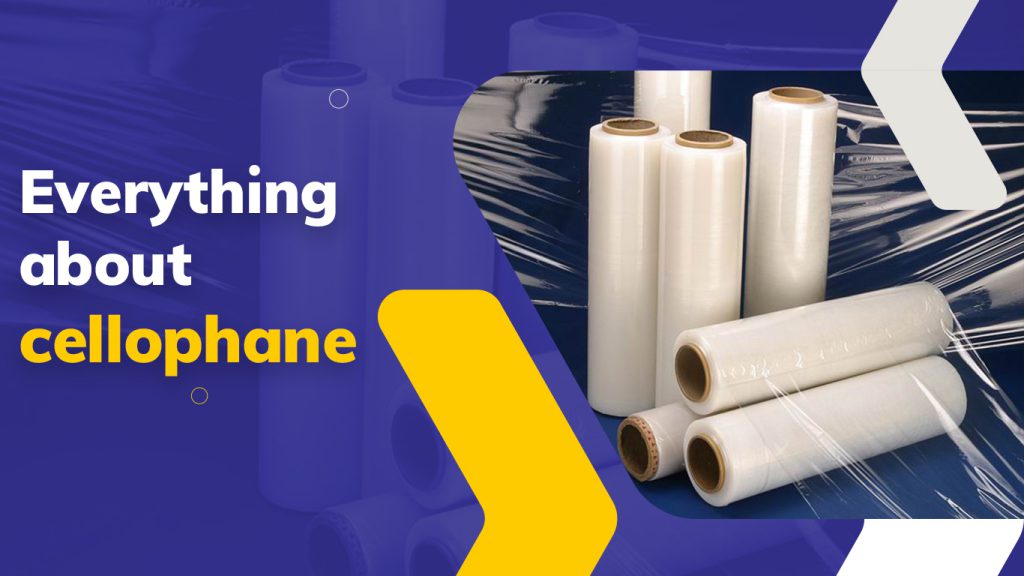
Cellophane is one of the most widely used polymers in the packaging and printing industry. Cellophane has been able to bring about a huge change in the packaging industry and has long been used for different types of packaging. We have all used it at least once, and it has a special place among the people.
[su_spacer]
[su_quote]In fact, cellophane is a type of thin nylon used for more strength and beauty in the packaging and printing industry. This product is manufactured and supplied in different types such as transparent or glossy, matte, metallized, shell-like, sandy and velvet[/su_quote]
[su_spacer]
The word “Cellephane” changed to cellophane over time and is known by that name today. The original idea for this product goes back to 1908 in France, when Jacques Brandenberger was sitting in a restaurant and noticed a drink being spilled on the table which made him upset, after which he decided to make a waterproof cover to prevent absorption of fluids.[su_spacer]
Given his knowledge and facilities he had in a French textile company, he was first able to spray waterproof powder on a fabric by designing a system and using viscose fibers, and thus he produced the first viscose film.
[su_spacer]
This effort was not very satisfactory because the film was very stiff and could easily be separated from the fabric. During 10 years of effort, this company was finally able to improve the polymer film proposed by Jacques. They tried to make their product softer by adding glycidine, and finally in 1912, Jacques was able to bring the first cellophane film making machine into the company’s production line.
[su_spacer]
The American chocolate company called White Man’s Candy was the first consumer of cellophane. In 1912, the company used this product in the packaging of chocolates and imported the cellophane from France for 12 years. In 1924, a company called DuPont started a cellophane production line in The U.S. and began the history of cellophane in this country.
[su_spacer]
Cellophane has been one of the main items in the packaging and printing industry since 1930. From 1960 onwards, various branches were created using various characteristics of cellophane, and this history continues to this day.
Cellophane is produced and distributed in different types such as transparent or glossy, matte, metalized, shell-like, sandy and velvet. Metalized cellophane is used for packaging products, such as chips, that get spoiled when exposed to direct sunlight. The aluminum in this type of cellophane prevents the rotting of food inside the package when exposed to the sun.
[su_spacer]
Transparent cellophane is usually used in the packaging of products such as macaroni, because this type of material is does not become spoiled even if exposed to direct sunlight. This type of cellophane is used for two reasons, its affordable price and the fact that the contents of the package can easily be seen.
[su_spacer]
As we said before, each of these types of cellophane has their own application and their variety is not without reason. For example, some foods need to be at a cold temperature and are stored in the refrigerator in order to stay edible and that is why shell-like cellophane is used for those products.
As mentioned above, this important and widely used product has various types, and each type has its own application depending on its material. But all these cellophanes have an important and common use, and that is to be a cover and package for various foods, agricultural products and medicines, and to prevent them from spoiling in the sun.
[su_spacer]
It is necessary to know that printing on different types of cellophane is different based on the available devices, which we will introduce in the following:[su_spacer]
Flexo printing: This type of printing is one of the most common and direct printing done on various types of cellophane, which is even more used than letterpress printing. This print is used more because of its advantages. One of the advantages of this printing is that it is able to print on a wide range of cellophane types, as well as paper, foil and plastics due to its flexibility.
[su_spacer]
Cylindrical printing: This type of printing is printing with a cut system. The quality of this print is higher than flexo printing, and the price is also higher. This type of printing is usually used when you want to roll the product. This type of printing, in addition to its high quality, has flexibility, and thus it is a very suitable option for printing on all types of cellophanes
As we explained, cellophane is not a single product and it has many derivatives. Therefore, the use of cellophane cannot be limited to one job or industry, because the scope of application of this product is so wide that we come into contact with this product in various types of packaging every day in different ways.
Packaging cellophanes are used in different types with different production methods for different uses. Therefore, you must first pay attention to your needs and the properties of different types of plastics to better understand cellophane and to be able to select the best one,
.[su_spacer]
This article tries to provide you with information regarding cellophane and its wide applications. We will be happy to receive your questions and opinions.